Dairy cows are an excellent source of milk. They can produce around 7-9 gallons of milk per day on average. You might be wondering what the difference is between a dairy cow and a beef cow or whether dairy cows can be used for beef at all.
Generally once dairy cows begin producing less milk or are unable to produce milk anymore at all, they are slaughtered for beef. This usually happens after about 3-5 years, depending on the cow.
There are many other notable and important differences between dairy cattle and beef cattle. This includes the overall appearance and origins of the different cattle breeds, the cattle's dietary needs, and how they are cared for by the farmer. Read on to find out more about these interesting and important differences.
Differences Between Dairy Cows and Beef Cattle
It may be difficult to tell the difference between a dairy cow and a beef cow. In this case, the name of the cow (dairy vs. beef) describes its primary purpose. Dairy cows are kept alive to birth calves and continually produce milk.
On the other hand, beef cows are raised for the main purpose of being slaughtered for meat and may never produce any milk during their lifetime. Here are the main characteristics, similarities, and differences between dairy cows and beef cows.
Characteristics of Dairy Cows
There are many different breeds of dairy cows. Each type of dairy cow has a unique origin, set of traits, or characteristics that set it apart from the other types. Some are easily recognizable, while others are a little more difficult to detect. Each cow is used for a slightly different purpose or is more commonly found in certain parts of the world, depending on climate.

The Holstein Dairy Cow is the Most Common
The Holstein cow is the most common and has large black and white spots. Each set of spots is unique to that cow, just like a fingerprint! The Red and White Holstein is very similar, except the black spots are replaced by a reddish/brown color.
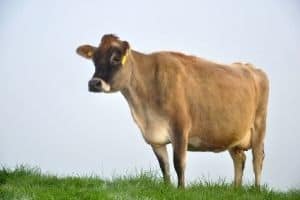
Slightly Smaller Jersey Dairy Cow
The Jersey dairy cow is slightly smaller than the other breeds by an average of about 300-700 pounds. It is easily recognizable with a light brown/tan color and large dark eyes. Unlike the Holstein, it has no spots.
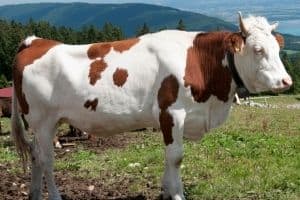
Brown Swiss Dairy Cow: the Oldest Breed
The Brown Swiss is believed to be the oldest of the dairy breeds mentioned here. They are generally silver/brown and have large ears. They are also commonly used for making certain types of cheeses.

The Guernsey Dairy Cow: Known for Golden Milk
The Guernsey cow generally looks like the Red and White Holstein, with a similar color and spot pattern. The milk they produce is golden, not white, unlike what we are used to seeing on grocery store shelves. This is because the milk has high levels of beta-carotene, which is also a source of Vitamin A.

The Largest Dairy Cow: Ayrshires
The Ayrshire cow is one of the largest dairy cows. It is white with red/brown spots. Ayrshires are known for being able to thrive in many different climates, which explains why they can be found all over the world, from North America to Europe to South Africa and Asia.
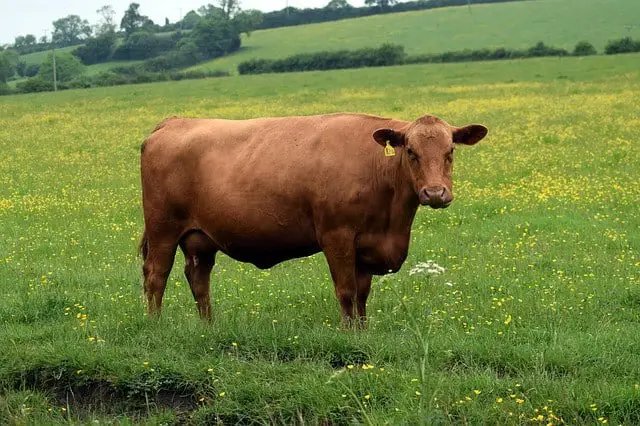
The Milking Shorthorn Dairy Cow: A Beef and Dairy Combination
Finally, the Milking Shorthorn is commonly used for both dairy and beef, depending on the farmer's needs. They are large, with lots of red/brown patches and spots. They were originally developed for beef but have fared well as dairy cows too.
Characteristics of Beef Cattle
There are many more breeds of beef cattle than dairy cattle. Over 80 breeds exist in the US, while there are approximately 250 breeds worldwide. This is generally the result of crossbreeding in an attempt to create cows that produce the best quality beef or to help ensure that they will survive in a certain type of climate.

Angus Beef Cattle: The Most Popular in the US
Angus (or Black Angus) cattle most popular beef cattle in the US. They are known for excellent marbling within the beef they produce. Marbling refers to how much fat exists within the cattle’s muscle. This is one of the top reasons that Angus Beef is in such high demand.
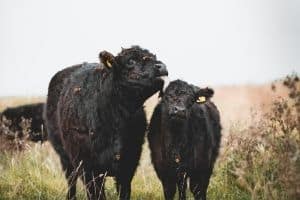
The Very Distinct-Looking Belted Galloway Beef Cattle
This type of cattle quite literally looks like it is wearing a white belt around its midsection, while the rest of its body is black. Because of their thick hair, they can survive better in colder winter climates than some of the other breeds, making them a popular choice throughout Northern Europe.

The Brahman Beef Cattle: Native to India
These cattle are very distinct looking, with a white coat and large ears and horns. They come from India and outnumber the Black Angus as the most common type of cattle worldwide.
The Charolais Beef Cattle: The Strongest and Stoutest Breed
These cattle are not only used for beef but also to help work the fields since they are so strong and durable. They originated in France but made their way to the United States via Mexico around the early 1930s.
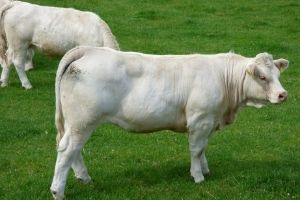
This slideshow showcases some of the most popular types of beef cattle, including pictures, fun facts, and origins of each type of cattle.
When Do Dairy Cows Get Used for Meat?
In many cases, dairy cows can be reliable sources of milk for 4-6 years. Once they are no longer able to provide milk, they can be slaughtered and used for beef. They are seldom slaughtered while they are still able to birth calves and produce milk. This is because farmers want to get as much value as they can from their cows during their lifetime.
According to the USDA, 15% of the beef eaten in the US comes from the dairy industry. In the past, there was a widespread misconception that older cows would not produce high-quality cuts of meat, such as steak. Instead, they could only be used for tougher, cheaper cuts, like ground beef.
However, the dairy industry has learned that former dairy cows can produce high-quality cuts of beef even when they are older, so increasing numbers of dairy cows are being used for beef once they are older.
Can Beef Cattle Be Used for Dairy?
Although dairy cows can eventually be slaughtered and used for beef, it doesn’t work the other way. In other words, beef cattle can’t be used to produce milk. This is true for a few major reasons.
The first reason is that beef cattle do not produce as much milk as dairy cows. While dairy cows produce 7-9 gallons of milk per day, beef cattle only produce about 1-2 gallons. This is just enough to feed their calves and doesn’t offer any extra milk for the farmer.
Another reason beef cattle aren’t used for milk is that they are not bred for that purpose. Their diets and genetics are better suited for producing high-quality cuts of meat, with excellent marbling and specific fat and protein content. This is in direct contrast to dairy cows, whose diets are better suited for producing milk with certain vitamins and minerals.
Are Dairy Cows Used for Meat?
There are many different types of dairy cows and beef cattle, and they are each used for different purposes. Dairy cows differ from beef cows in a way that they produce milk for most of their lives and give birth to multiple calves.
They can be used for meat, but they are usually only slaughtered later in their life, usually once they can no longer give birth to calves and produce milk. Some dairy cows are not used for beef due to health defects or poor meat quality, but when possible, most farmers try to sell dairy cows for beef once they can no longer produce milk.
